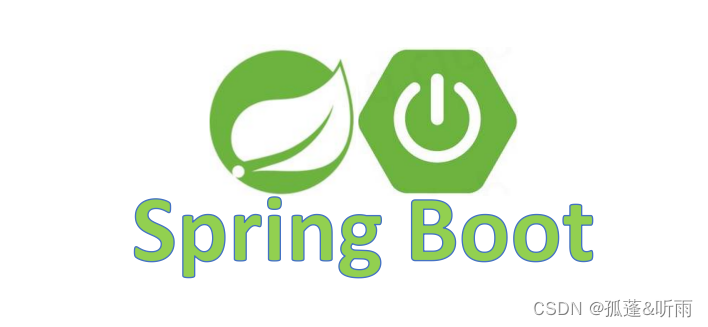- SpringBoot的 ResponseEntity类讲解(具体讲解返
- springboot实现多数据源
- 探索Headless组件与Tailwind CSS的魔力——前端开发的
- vue前端简单实现无缝循环滚动自动播放,滚动条上下滚动,鼠标悬停,从鼠
- Java租赁汽车租车系统设计与实现(Idea+Springboot+m
- Springboot利用CompletableFuture异步执行线程
- 【大数据实时数据同步】超级详细的生产环境OGG(GoldenGate)
- 项目启动报错:If you want an embedded data
- 【Java EE】关于Spring MVC 响应
- MySQL-触发器(TRIGGER)
- 【大数据】大数据概论与Hadoop
- 【postgresql 基础入门】数据类型介绍,整型,字符串,浮点数,
- 求组合数的三种算法
- Springboot3.X集成WebSocket完整流程
- 抖音六神最新算法
- MySql基础一之【了解MySql与DBeaver操作MySql】
- 23、Lua 学习笔记之一(初阶话题)
- 云计算——云计算与虚拟化的关系
- pytorch超详细安装教程,Anaconda、PyTorch和PyC
- 已解决com.rabbitmq.client.ShutdownSign
- 若依(前后端分离版)部署全流程 | 宝塔部署SpringBoot项目踩
- SpringBoot3整合Redis&基础操作
- 基于VSCode安装Node.js开发环境
- SpringBoot 2.2.5 配置Logback打印日志,并自定义
- 已解决org.springframework.amqp.AmqpIOE
- 【python】深入探讨flask是如何预防CSRF攻击的
- 1.5MHz,1.2A COT 架构同步降压变换器只要0.16元,型号
- 2024最新!一文看懂Spring Batch批处理(大白话版,干货满
- Error running ‘Tomcat‘: Unable to o
- 创建Maven项目
点击下载《SpringBoot实现文件上传和下载实现全过程》
点击下载《SpringBoot实现文件上传和下载实现全过程(源代码)》
1. 引言
在Web应用中,文件上传和下载是常见的需求。Spring Boot框架提供了强大的支持和便利的API,使得开发者可以轻松地实现文件上传和下载功能。本文将详细介绍如何在Spring Boot应用中实现文件上传和下载,包括实现原理和完整的代码示例。

2. 文件上传下载
- 文件上传:
- 当客户端发送文件上传请求时,Spring Boot会接收到一个包含文件的MultipartHttpServletRequest对象。
- 在控制器方法中,可以通过参数接收这个MultipartHttpServletRequest对象,并从中获取上传的文件。
- Spring Boot会将上传的文件存储到临时目录中,可以通过MultipartFile对象的getOriginalFilename()方法获取文件名,通过getBytes()方法获取文件内容。
- 文件上传后,可以将其保存到服务器的持久化存储中,例如本地磁盘、云存储等。
- 文件下载:
- 当客户端发送文件下载请求时,Spring Boot会根据请求的URL找到对应的文件。
- 找到文件后,需要将文件的内容写入到Response的输出流中,为了防止浏览器解析,需要在响应头中设置正确的MIME类型(Content-Type)。
- 如果要实现断点续传功能,需要根据文件的元数据信息判断是否已经下载过该文件,如果已经下载过,则直接返回已存在的文件内容即可。
2.1 添加依赖
首先,确保你的pom.xml文件中包含了Spring Boot的Web Starter依赖。这个依赖会包含实现文件上传所需的Servlet和相关类。
JDK版本:java17
4.0.0 org.springframework.boot spring-boot-starter-parent 3.2.3 com.example fileOperate 0.0.1-SNAPSHOT fileOperate fileOperate 8 org.springframework.boot spring-boot-starter org.springframework.boot spring-boot-starter-test test org.springframework.boot spring-boot-starter-web commons-io commons-io 2.4 org.springframework.boot spring-boot-maven-plugin
2.2 配置文件上传大小限制
在application.yml文件中,你可以配置文件上传的大小限制。例如,下面的配置允许上传最大为1MB的文件:
server:
port: 18080
spring:
servlet:
multipart:
max-file-size: 1MB
max-request-size: 1MB
2.3 创建上传控制器
创建一个控制器类,用于处理文件上传请求。在这个类中,使用@PostMapping注解指定处理POST请求的方法,并使用@RequestParam("file") MultipartFile file参数接收上传的文件。
// 导入需要的包和类
import org.springframework.web.bind.annotation.*;
import org.springframework.web.multipart.MultipartFile;
import org.springframework.http.ResponseEntity;
import org.springframework.http.HttpStatus;
import org.springframework.core.io.Resource;
import org.springframework.core.io.UrlResource;
import org.springframework.core.io.InputStreamResource;
import org.springframework.beans.factory.annotation.Autowired;
import org.springframework.stereotype.Controller;
import org.springframework.web.bind.annotation.*;
import org.springframework.web.multipart.*;
// 创建文件上传控制器
@RestController
@RequestMapping("/api/upload")
public class FileUploadController {
// 处理文件上传请求的POST方法
@PostMapping("/")
public ResponseEntity handleFileUpload(@RequestParam("file") MultipartFile file) {
try {
// 获取上传文件的文件名
String fileName = file.getOriginalFilename();
// 将文件保存到磁盘或执行其他操作,这里只是简单地将文件保存到静态资源目录下
file.transferTo(new File("D:/" + fileName));
return new ResponseEntity<>("文件上传成功!", HttpStatus.OK);
} catch (Exception e) {
return new ResponseEntity<>("文件上传失败:" + e.getMessage(), HttpStatus.INTERNAL_SERVER_ERROR);
}
}
}
2.4 创建下载控制器
创建一个控制器类,用于处理文件下载请求。在这个类中,我们将使用@GetMapping注解指定处理GET请求的方法,并使用@RequestParam("filename") String fileName参数接收要下载的文件名。然后,我们可以使用文件名来获取要下载的文件,并将其作为响应返回给客户端。
为了让Spring Boot能够找到静态资源(如文件),你需要在src/main/resources目录下创建一个名为static的文件夹,并在其中创建一个名为files的文件夹,用于存放要下载的文件。
import org.springframework.core.io.InputStreamResource;
import org.springframework.core.io.Resource;
import org.springframework.http.*;
import org.springframework.web.bind.annotation.GetMapping;
import org.springframework.web.bind.annotation.PathVariable;
import org.springframework.web.bind.annotation.RequestMapping;
import org.springframework.web.bind.annotation.RestController;
import org.springframework.core.io.ResourceLoader;
import org.springframework.beans.factory.annotation.Autowired;
import org.slf4j.Logger;
import org.slf4j.LoggerFactory;
import java.io.IOException;
@RestController
@RequestMapping("/api/download")
public class FileDownloadController {
private static final Logger log = LoggerFactory.getLogger(FileDownloadController.class);
@Autowired
private ResourceLoader resourceLoader;
// 处理文件下载请求的GET方法,通过文件名获取文件并返回给客户端下载
@GetMapping("/{filename:.+}")
public ResponseEntity handleFileDownload(@PathVariable String filename) throws IOException {
// 获取要下载的文件的Resource对象,这里假设文件保存在静态资源目录下的files文件夹中
Resource resource = resourceLoader.getResource("classpath:static/files/" + filename);
if (resource == null) {
return new ResponseEntity<>(HttpStatus.NOT_FOUND);
}
// 将文件内容包装为响应体,并设置响应头信息,提示浏览器下载文件而不是打开文件
InputStreamResource inputStreamResource = new InputStreamResource(resource.getInputStream());
HttpHeaders headers = new HttpHeaders();
headers.add(HttpHeaders.CONTENT_DISPOSITION, "attachment; filename=" + filename);
return ResponseEntity.ok()
.headers(headers)
.contentType(MediaTypeFactory.getMediaType(resource).get())
.body(inputStreamResource);
}
}
3. 总结
通过以上步骤,你可以在Spring Boot应用中实现文件上传和下载功能。文件上传通过POST请求实现,将文件作为请求的一部分发送到服务器。文件下载通过GET请求实现,根据文件名从服务器上获取文件内容,并通过浏览器下载。在这个过程中,Spring Boot框架提供了丰富的API和便利的配置选项,使得开发者可以轻松地实现这些功能。
点击下载《SpringBoot实现文件上传和下载实现全过程》
点击下载《SpringBoot实现文件上传和下载实现全过程(源代码)》
上一篇:南京邮电大学数据库第三次课后作业














